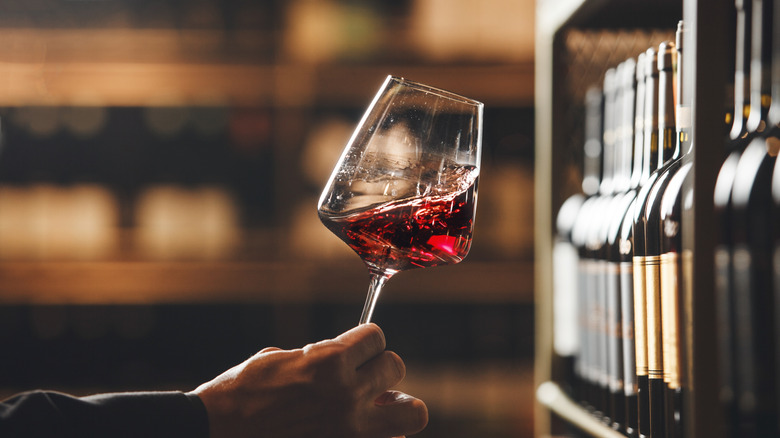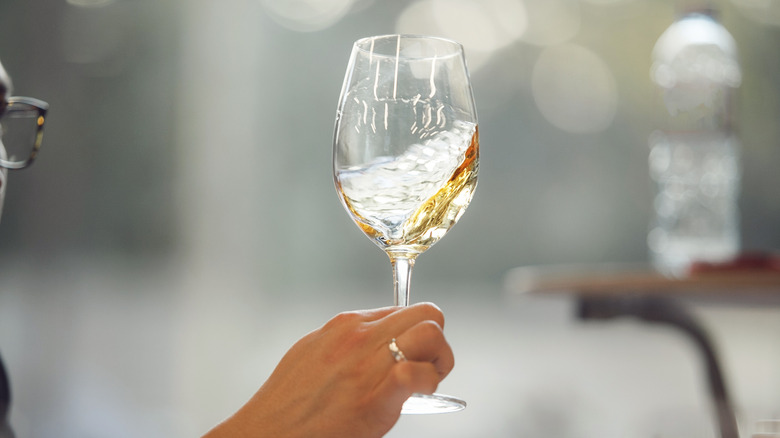The Correct Way To Swirl Wine Before Tasting
Seeing, swirling, sniffing, sipping, and savoring — these are the five "S's" of wine tasting. It can feel intimidating to be next to a true wine connoisseur as they go through these steps, and understanding the mechanics of the swirl can be particularly tricky. It's easier to "fake it as you make it" when you sip and smell, but the swirl takes a bit more practice. And the swirl isn't just to look like you know what you're doing — it helps to observe the wine better and release more aroma.
The key to swirling properly is to start small — nothing shows you're an amateur more than sloshing wine out onto the floor. There are a few techniques for holding the wine glass correctly: It can be kept on the table or lifted, and it should be held by the stem. Make small, tight circles, and not too fast, but you do want a continuous, rolling motion. Don't be that person with a big, showy swirling technique — keep the glass low and the motion controlled.
How long do you swirl for? For a few seconds is fine — around 5-10 — and even up to a minute of swirling is acceptable. There is no need for continuous swirling; after the first sip, focus on savoring. Each different style of wine glass will feel differently when swirling; be careful with the smaller bowls. Pro tip: Practice with water in a wine glass to get the hang of it!
The science behind the swirl
Swirling a glass of wine is meant to enhance the overall drinking experience, and better connect you to whatever is in the glass. Sure, it's fine to give wine a quick whiff and go straight to drinking it, but taking your time with a wine can make for a more memorable experience. One of the top reasons for swirling the wine is practical: Exposing more of the surface area of the wine to the air helps oxygenate it. This is the same principle as opening a bottle of wine and letting it sit before pouring a glass — it helps soften the flavors of the wine and open up the aroma.
Aside from aroma and tasting notes, swirling provides the opportunity to better see the wine's color and legs. Sitting flat at the bottom of the glass, the color of the wine always looks more concentrated and darker than it actually is. By rolling it along the sides of the glass, the true color is easier to see. You'll also have the opportunity to view the "legs" of the wine, which are the streaks that run down the inside of the glass after swirling. These streaks don't indicate the quality of wine as popular belief has it; an abundance of larger streaks represents higher alcohol content, and slower running streaks signal a sweeter wine. Once you've tackled this wine-tasting tip, learn about how to store wine correctly and tips for choosing the best glassware.

